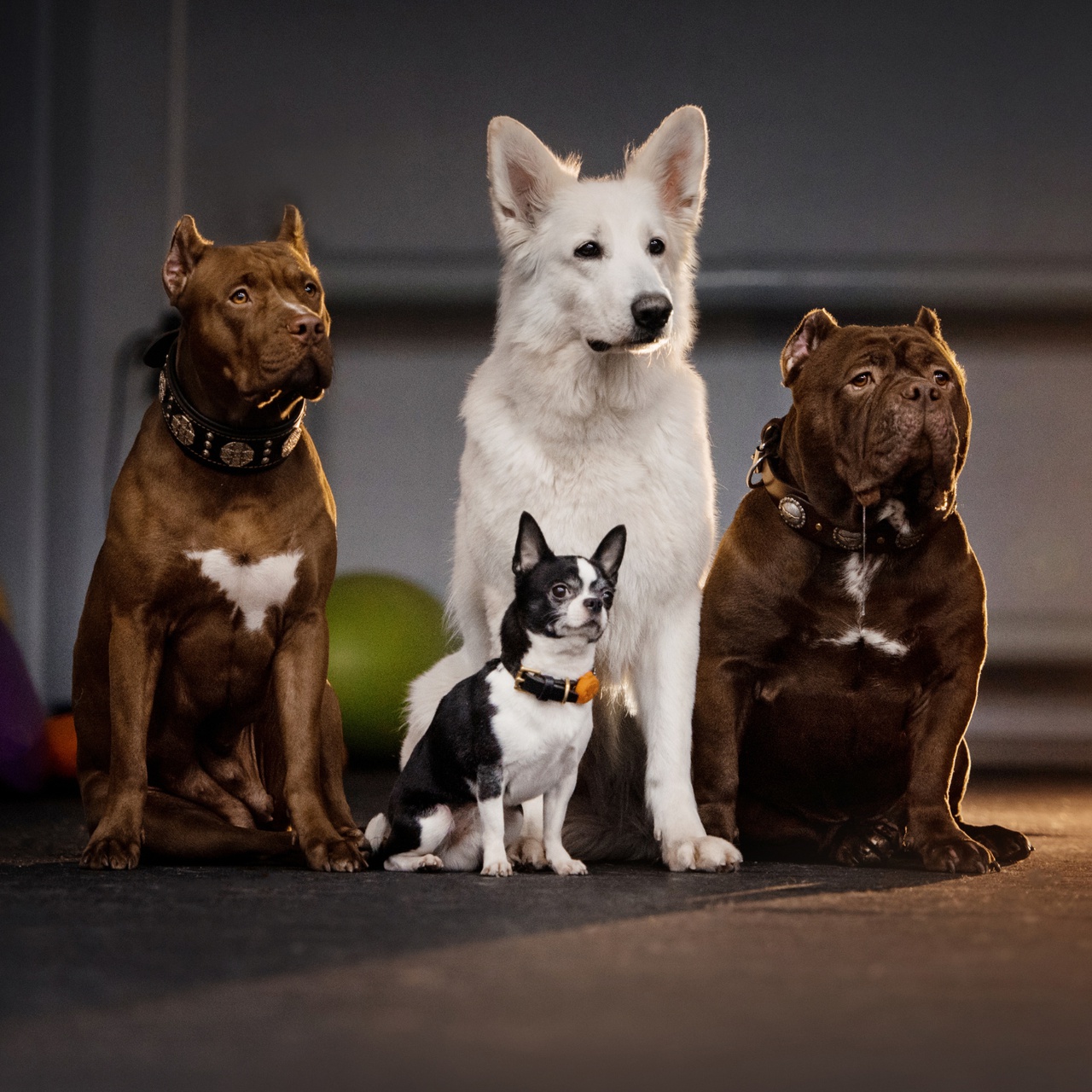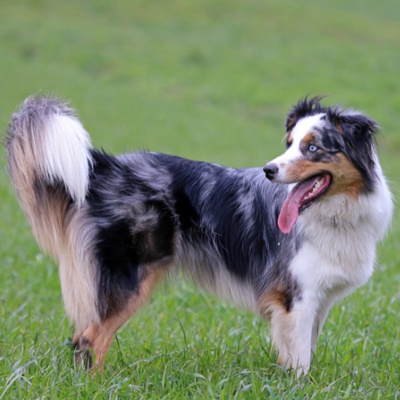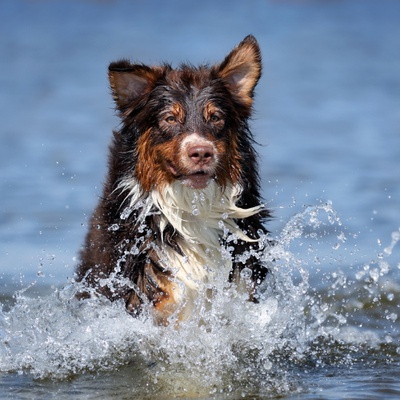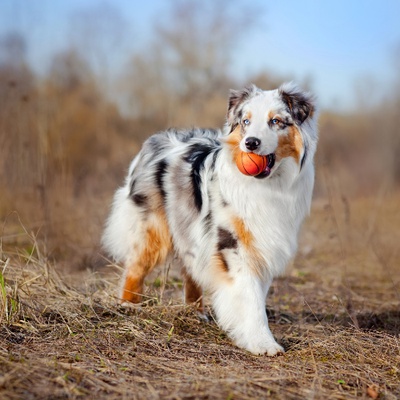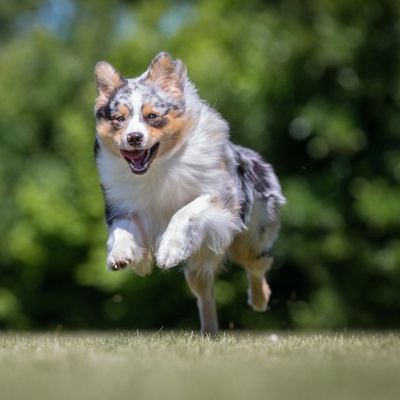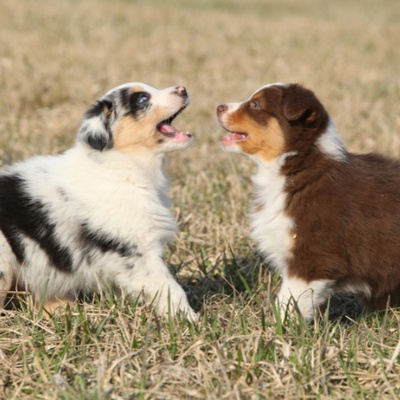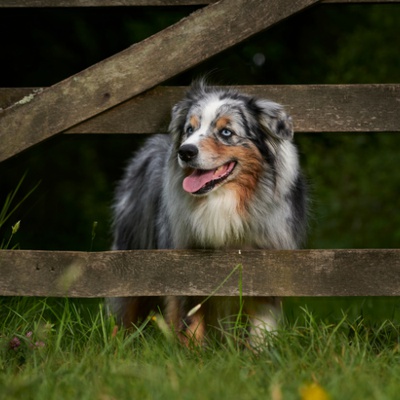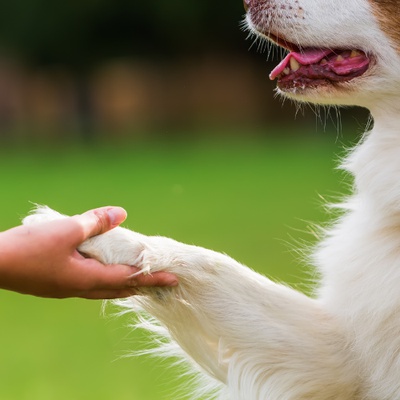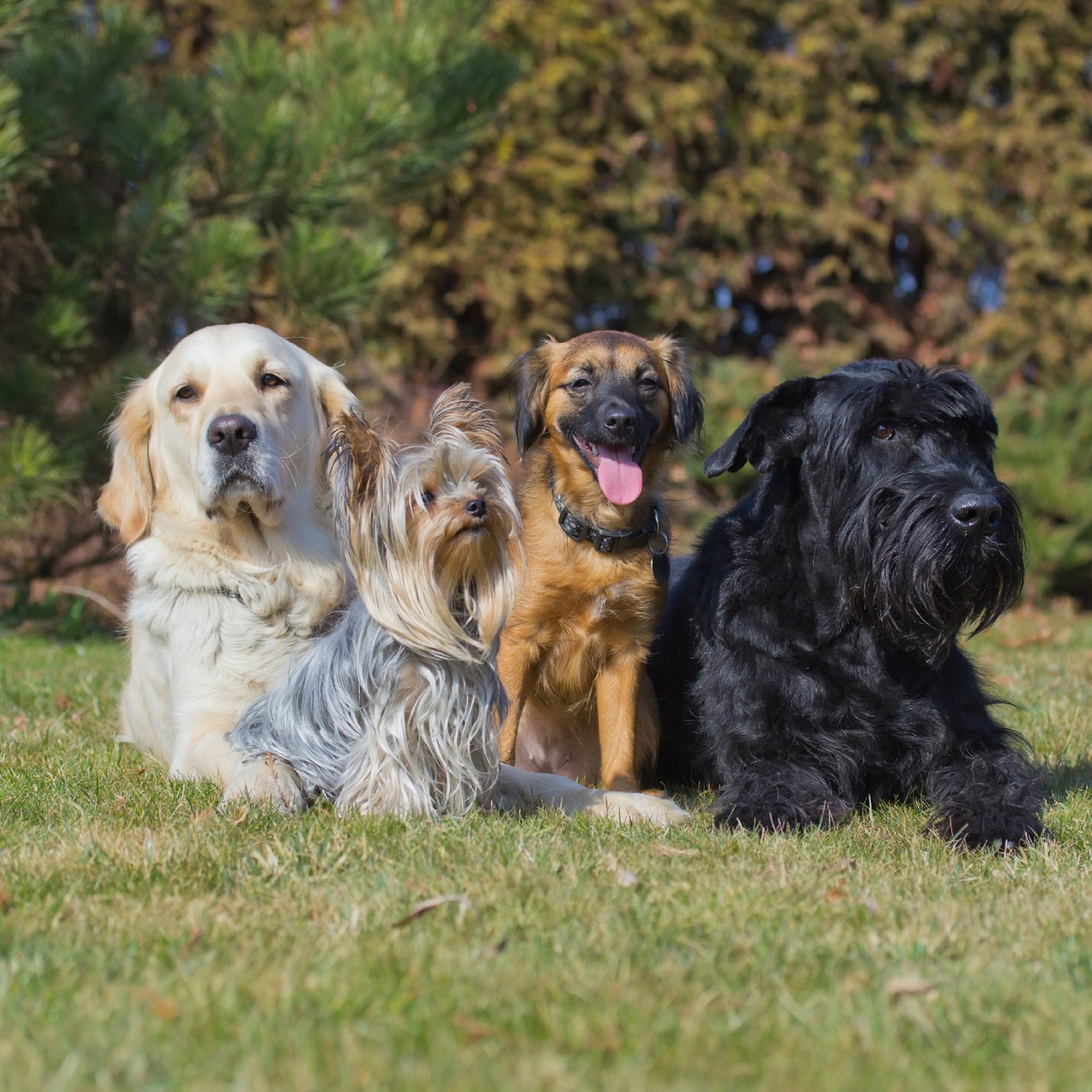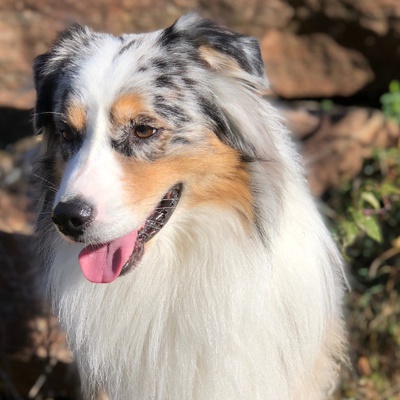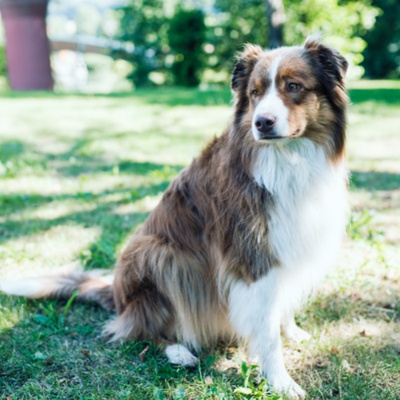Introducing the Australian Shepherd
Discover all there is to know about the Australian Shepherd: its characteristics, behavior, training, and its cost.
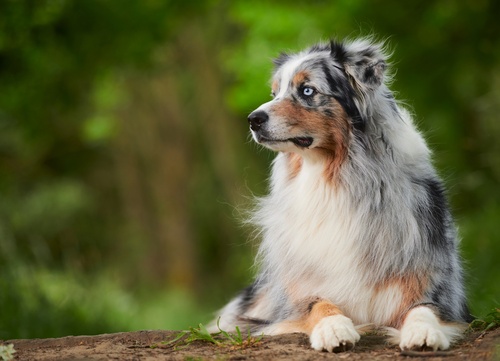
Discover all there is to know about the Australian Shepherd: its characteristics, behavior, training, and its cost.
The Australian Shepherd, often known as the "Aussie," holds a misleading name as its roots trace back to the Basque region between Spain and France. Bred for herding, the breed gained its name and popularity in the ranches of Australia before making its way to the United States. Beyond being a favored companion among horseback riders, the Aussie has captivated pet lovers worldwide, becoming a beloved household pet in Great Britain and beyond.
This section outlines the unique features of the Australian Shepherd.
The Australian Shepherd falls into the group 1 known as the herding group. They are renowned for their intelligence, trainability, and instinctual ability to control the movement of other animals.
The Australian Shepherd is a medium-sized dog. They typically stand about 18-23 inches at the shoulders and weigh between 40-65 pounds, embodying a strong and agile physique.
Australian Shepherds boast a medium-length coat. It provides protection and insulation, with a texture that can range from straight to slightly wavy.
While the Australian Shepherd's coat can display a variety of colors, they are most commonly known for their merle (marbled) coloration. Shades can range from blue merle to red merle, with varying patterns.
Australian Shepherds are versatile in their living environments but thrive in spaces where they can exercise and play, making them well-suited to active households.
Australian Shepherds are highly sociable and generally good-natured, making them excellent companions for children and other pets, though their herding instincts may surface in their interactions.
The breed is generally robust, but like many herding breeds, they can be predisposed to certain genetic conditions, including hip dysplasia and collie eye anomaly.
Aussies are eager and persistent learners, making them highly trainable. They respond best to positive reinforcement and consistent, patient training methods.
We can help!
Every dog has its own character, and so do you. Making the right choice will ensure his well-being and yours.
Take our quiz to find out which breed is right for you, based on your personality, lifestyle, location and many other criteria.
Don't wait any longer and take the quiz to find out the answer!
Australian Shepherds are medium-sized, well-proportioned dogs exuding agility and strength. They are adorned with a uniquely patterned coat, often a mix of vibrant colors, and have expressive faces accentuated by their bright, almond-shaped eyes.
Australian Shepherds are moderately sized, with females typically ranging from 18 to 21 inches and males from 20 to 23 inches at the shoulder.
Weights can vary significantly based on diet and activity level, but on average, females weigh between 40 and 55 pounds, and males from 50 to 65 pounds. Australian Shepherds experience a swift growth rate, reaching close to their adult size by 6-7 months of age, though they may continue to fill out and gain muscular definition until they are about 2 years old.
Australian Shepherds are adorned with a double coat that varies from medium to long in length. The fur is resilient, with a texture that can be straight to wavy, presenting a magnificent mane around the neck and feathering on the legs.
This breed of dog is not hypoallergenic. So if you have allergies to dogs, the Australian Shepherd is not for you.
The coat of the Australian Shepherd is distinguished by its variety, often exhibiting blue or red merle, black, and red, with or without white markings and/or tan points, creating a striking appearance unique to each individual dog.
The Australian Shepherd's coat requires regular care. It should be brushed twice a week to prevent tangles and remove dirt.
During its moulting periods, in spring and autumn, the Australian Shepherd sheds a lot. You should therefore increase brushing frequency to remove dead hairs. This will avoid impulsive scratching.
Thanks to their thick, dense undercoat, Australian Shepherds are weather-resistant! However, you can give him a bath once a year, when you see he needs it.
The Australian Shepherd is a balanced and agile dog with a strong physique. It has a distinct head shape, almond-shaped eyes that may be blue, brown, or multicolored, and triangular ears that fold over and are set high on the head.
The body of the Australian Shepherd is solid and muscular, a testament to its herding heritage, displaying a level back and a strong, supple build that allows for quick, agile movements.
Australian Shepherds are known for their loyalty, intelligence, and affectionate nature. They are protective companions that form strong bonds with their families.
The Australian Shepherd belongs to group 1 known as the herding group, which is composed of up of cattle dogs like the Border Collie and Malinois, as well as sheepdogs.
These are industrious canines with an aptitude for leading whole herds. These breeds are extremely devoted to their adopted homes and ferociously guard their territory.
Australian Shepherds are enthusiastic and lively companions, well-regarded for their keen intelligence and high energy. They bond deeply with their owners, often showing their affection through active engagement and close companionship. These dogs require an owner who is available and engaged, as their emotional and developmental well-being is tied to interaction and activity.
The Australian Shepherd is a breed that embodies sociability and goodwill. Their approachable demeanor extends to humans and other animals alike, and they are known for being excellent companions for children. However, the sociable nature of an Aussie is best nurtured through early socialization to ensure they grow into well-rounded adult dogs.
The Australian Shepherd can adjust to a variety of living environments, from cozy apartments to expansive farms. While they can live in an urban setting, they need an attentive owner committed to providing sufficient exercise. Australian Shepherds require lengthy walks, typically around an hour daily, to maintain their physical and mental well-being.
Despite their adaptability, Australian Shepherds flourish when they have access to open spaces. A yard or garden where they can explore, play, and utilize their boundless energy is ideal. These active dogs enjoy a setting where their natural herding and agility can be exercised, which is essential for their happiness and health.
As you can see, the Australian Shepherd is not a passive dog that lounges in its basket. It's a very active dog that loves sport! More than just a passion, physical activity is vital to their health and well-being. He'll never say no to a jog with you, a walk on the beach or a trek in the mountains.
As well as physical exercise, Australian Shepherds need intellectual stimulation to thrive. Activities such as agility are perfectly suited to this intelligent and spirited creature.
Training an Australian Shepherd begins at an early age. It's a stubborn dog, so its small temperament needs to be controlled from the start to avoid outbursts. The Australian Shepherd is very averse to punishment-based training, and he'll make you understand this. He's much more receptive to training based on reward, listening and kindness.
To develop his sociability, dog training courses are an excellent way for him to meet his fellow dogs while providing mental stimulation. Finally, if your dog is well-trained, you don't need to put him on a leash when he goes for a walk - he'll stay close to you.
Take the test and find out the dog breed that matches your personality and lifestyle.
The Australian Shepherd is generally a hearty breed with good health, but like all breeds, they require daily care and attention to prevent illnesses and ensure a long, happy life.
Australian Shepherds are typically healthy and robust dogs, but they do have predispositions to certain genetic issues like hip dysplasia, epilepsy, and certain eye conditions, such as collie eye anomaly.
Symptoms can vary, so it’s crucial for owners to be aware of any changes in their dog's behavior or health. The lifespan of an Australian Shepherd generally ranges between 12 and 15 years, depending on their health and lifestyle.
We recommend worming your Australian Shepherd at least 3 times a year. However, make sure the dewormer does not contain ivermectin, a substance that can be fatal for this sheepdog.
Routine veterinary care is crucial for the Australian Shepherd's health, including regular vaccinations, deworming, and parasite control. Owners should also maintain their Aussie's coat with regular brushing, provide dental care to prevent tartar buildup, clean their ears to avoid infections, and keep their nails trimmed.
It's essential to be aware of the dog's potential for allergies and to seek veterinary advice for management. Australian Shepherds are not considered a hypoallergenic breed.
The Australian Shepherd is a sporting dog with specific needs. Their intense physical activity requires a balanced diet rich in protein. Quality kibbles contain all the nutrients your dog needs. Australian Shepherds are big eaters! So keep an eye on his portions.
You need to get your dog used to its food from a very early age! All you have to do is vary the portions, adapting them to your dog's size and activity, while keeping the same brand, so as not to upset his digestive system.
As we all know, once his meal is over, your Australian Shepherd will have only one desire: to go out, play and run. But be careful. It's important to keep him calm while he's digesting. If he is too active after eating, it could turn its stomach.
The Australian Shepherd is highly regarded for its intelligence and versatility and has gained popularity in Great Britain. There are several breeders, but it's important to consider several factors before adopting.
Before welcoming an Australian Shepherd into your home, it’s crucial to make an informed decision. Choose a reputable breeder by visiting their premises to observe the living conditions and behavior of the dogs. The health of the puppy and its lineage is of utmost importance; ask the breeder for health clearances for both the puppy and its parents.
Lastly, you must have your dog microchipped by the age of 8 weeks old and have their details registered on a relevant database like Petlog or Animal Tracker. This is a legal requirement in Great Britain, and non-compliance could lead to a £500 fine. Microchipping can be done by your vet for a small fee, or for free at any Blue Cross center.
The price of an Australian Shepherd puppy varies between
et
Prices vary according to breeding, pedigree, bloodline and coat.
An adult Australian Shepherd obviously costs less. Its price will depend on its age and state of health. You can also adopt a dog from a shelter.
As well as the initial purchase price, you need to factor in the annual costs of caring for your dog. An Australian Shepherd will cost you between
et
per year.
Choosing a dog that matches your personality and lifestyle will ensure your well-being and his!
To access the most relevant information, suitable payment methods, and delivery in your region, please select the website corresponding to your country.

